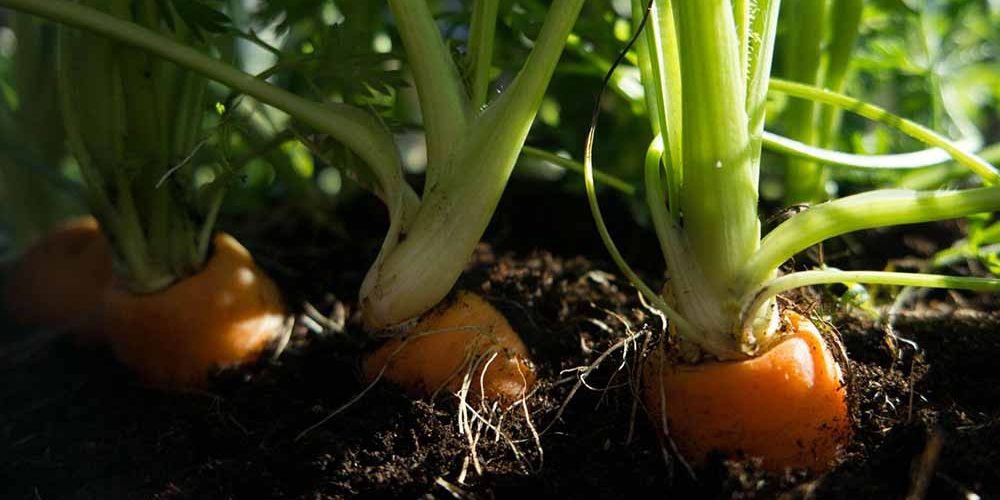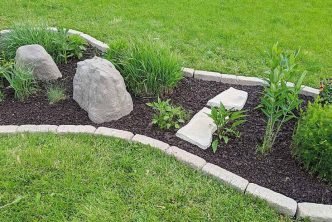Carrots are not only a versatile and nutritious vegetable but also one of the easiest to grow in your own garden. Whether you’re a seasoned gardener or just starting, learning how to plant carrots can be a rewarding experience. In this guide, we’ll walk you through the entire process, from selecting the right carrot varieties to harvesting them at their peak. So, roll up your sleeves, grab your gardening tools, and let’s get started on your journey to growing the perfect carrots.
Table of Contents
Step-by-step Guide on How to Plant Carrots
Planting carrots is a simple process that requires careful attention to detail. Here’s a step-by-step guide to ensure your carrot crop thrives:
1. Choosing the Right Location
The first step in planting carrots is selecting the perfect spot for your carrot bed. Carrots thrive in well-drained soil with full sunlight. Ensure the soil is loose and free of rocks to allow the carrots to grow straight and deep. If your soil has a high clay content, consider adding sand to improve drainage. If you plan to grow carrots indoors or in containers, providing adequate natural light can be a bit challenging. In such cases, LED grow lights for plants can be a useful supplement.
2. Preparing the Soil
Before planting, it’s crucial to prepare the soil properly. Carrots prefer loose, well-drained soil. Start by loosening the soil to a depth of at least 12 inches. You can use a garden fork or a tiller for this purpose. Incorporate organic matter such as compost or well-rotted manure to improve soil fertility and structure. This step will provide the necessary nutrients and ensure your carrot roots have room to grow.
3. Selecting Carrot Varieties
Carrots come in various shapes, sizes, and colors, each with its unique flavor and culinary uses. Popular carrot varieties include Nantes, Danvers, and Imperator. When choosing a variety, consider your preferences and the growing conditions in your region. Some varieties are better suited for specific climates and soil types, so check with your local nursery or agricultural extension office for recommendations.
4. Planting Carrot Seeds
Once you have your soil prepared and carrot varieties selected, it’s time to plant the seeds. Carrots are typically grown from seeds rather than transplants. Plant the carrot seeds directly into the prepared soil. Sow them thinly, about 1/4 inch deep, and space them approximately 2 inches apart in rows. Cover the seeds with a light layer of soil and water gently to ensure good seed-to-soil contact.
5. Thinning Seedlings
As your carrot sprouts, you’ll need to thin them out to provide enough space for each carrot to develop properly. Crowded carrots can lead to stunted growth and misshapen roots. When the seedlings are about 2 inches tall, thin them to leave 3-4 inches between each plant. You can use scissors to snip off the excess seedlings at ground level, being careful not to disturb the remaining plants.
6. Watering
Consistent moisture is essential for successful carrot growth. Keep the soil evenly moist throughout the growing season, especially during the germination period. However, be cautious not to overwater, as this can cause carrots to split or rot. Consider using a soaker hose or drip irrigation to provide consistent and gentle moisture.
7. Mulching
To help maintain soil moisture, regulate temperature, and suppress weed growth, apply a layer of organic mulch around your carrot plants. Mulching also prevents the formation of a hard crust on the soil’s surface, which can hinder carrot root development. Straw or shredded leaves make excellent mulch options for carrots.
8. Fertilizing
Carrots don’t require heavy feeding, but they do benefit from a balanced fertilizer. Use a fertilizer with slightly higher phosphorus and potassium levels, as these nutrients promote root development and overall plant health. Apply the fertilizer sparingly and avoid over-fertilizing, as excessive nitrogen can lead to excessive foliage growth at the expense of root growth.
9. Pest and Disease Management
Keep a close eye on your carrot bed for common pests such as aphids, carrot flies, and nematodes. To manage these pests, consider using organic pest control methods like neem oil or introducing beneficial insects like ladybugs. Crop rotation is also an effective strategy to prevent soil-borne diseases.
10. Harvesting Carrots
The moment you’ve been waiting for is here—harvesting your homegrown carrots! Typically, carrots are ready for harvest 60 to 80 days after planting, depending on the variety and growing conditions. To check if they’re ready, gently pull a carrot from the soil. If it’s the desired size and flavor, it’s time to harvest. Use a garden fork or your hands to carefully lift the carrots from the ground, being gentle to avoid damaging the roots. Trim the tops, brush off excess soil, and store them in a cool, dark place.
Conclusion
Congratulations! You’ve now mastered the art of planting carrots and can enjoy the satisfaction of growing your own delicious and nutritious carrots. By following the steps outlined in this comprehensive guide and considering the provided tips, you’ll be well on your way to cultivating a bountiful carrot crop. So, roll up your sleeves, get your hands dirty, and watch your garden flourish with these vibrant orange gems.
FAQs about How to Plant Carrots
Can I grow carrots in containers?
Absolutely! Carrots can thrive in containers, making them an excellent option for gardeners with limited space. Choose a deep container, at least 12 inches in depth, to accommodate the carrot’s long taproot. Fill the container with a well-draining potting mix, sow the seeds, and follow the same care instructions as for garden-grown carrots.
How do I store harvested carrots?
To store harvested carrots, start by removing the tops to prevent them from drawing moisture from the roots. Brush off excess soil but avoid washing them. Carrots are stored best in a cool, dark place with high humidity. A root cellar or a refrigerator crisper drawer with a damp towel works well for storing carrots long-term.
Are there any companion plants that benefit carrots?
Yes, several companion plants can benefit carrots by deterring pests or enhancing their growth. Consider planting onions, leeks, and lettuce alongside your carrots. These companions can help repel carrot flies and aphids while promoting healthy carrot growth.
Can I grow carrots year-round?
Carrots are considered a cool-season crop, and they thrive in spring and fall. However, in some regions with mild winters, you can grow carrots year-round with proper protection. Use row covers or cold frames to shield them from frost and cold temperatures.
What causes carrots to develop forked roots?
Forked or misshapen carrot roots are often the result of rocky or compacted soil. It’s essential to prepare the soil properly before planting, ensuring it’s loose and free of obstacles. Thinning seedlings also helps prevent overcrowding, which can lead to deformities.
How deep do carrot roots grow?
Carrot roots can grow anywhere from 6 to 12 inches deep, depending on the soil’s quality and texture. Loose, well-tilled soil allows carrots to develop their roots to their full potential.





